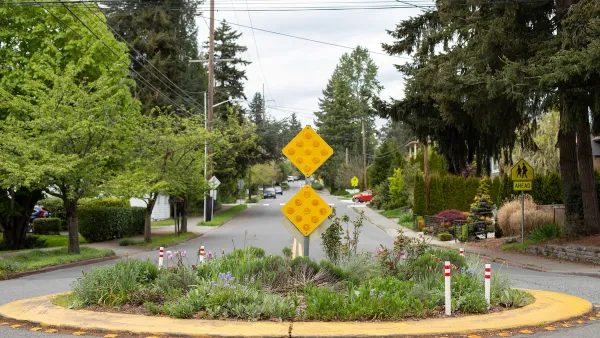A successful small business in Chicago has ruffled some feathers in a neighborhood grappling with crime and poverty. Why? Because Felony Franks is too unsavory a name, even for a hot dog stand that employs ex-convicts.
"Felony Franks encountered friction even before it opened in July. Last year, after securing building permits from the city, Mr. Andrews visited Robert Fioretti, the alderman who represents the area around Felony Franks. 'I don't like the name,' Mr. Andrews recalls the alderman saying."
"Later the alderman proposed a city ordinance that would prohibit signs extending 7 inches or more from a building's facade on a small stretch of street where Felony Franks is located. The City Council has yet to vote on the proposal. Mr. Andrews calls it a 'direct attack' on his business. Mr. Fioretti says it's part of a beautification project and 'has nothing to do' with the hot-dog stand."
"Kevin Jones, 42, who works at Felony Franks, says he doesn't feel exploited. 'Working here allows me to provide for myself and my family,' says Mr. Jones, who says he used to sell crack and served two years' probation for possession of a controlled substance. 'I've lived in this neighborhood for 15 years and there's gunfire every other day and you never hear anything about that, but all of a sudden there's all this hoopla about a hot-dog stand?'"
FULL STORY: Slaw and Order: Hot-Dog Stand in Chicago Triggers a Frank Debate

Planetizen Federal Action Tracker
A weekly monitor of how Trump’s orders and actions are impacting planners and planning in America.

Chicago’s Ghost Rails
Just beneath the surface of the modern city lie the remnants of its expansive early 20th-century streetcar system.

Amtrak Cutting Jobs, Funding to High-Speed Rail
The agency plans to cut 10 percent of its workforce and has confirmed it will not fund new high-speed rail projects.

Ohio Forces Data Centers to Prepay for Power
Utilities are calling on states to hold data center operators responsible for new energy demands to prevent leaving consumers on the hook for their bills.

MARTA CEO Steps Down Amid Citizenship Concerns
MARTA’s board announced Thursday that its chief, who is from Canada, is resigning due to questions about his immigration status.

Silicon Valley ‘Bike Superhighway’ Awarded $14M State Grant
A Caltrans grant brings the 10-mile Central Bikeway project connecting Santa Clara and East San Jose closer to fruition.
Urban Design for Planners 1: Software Tools
This six-course series explores essential urban design concepts using open source software and equips planners with the tools they need to participate fully in the urban design process.
Planning for Universal Design
Learn the tools for implementing Universal Design in planning regulations.
Caltrans
City of Fort Worth
Mpact (founded as Rail~Volution)
City of Camden Redevelopment Agency
City of Astoria
City of Portland
City of Laramie




























